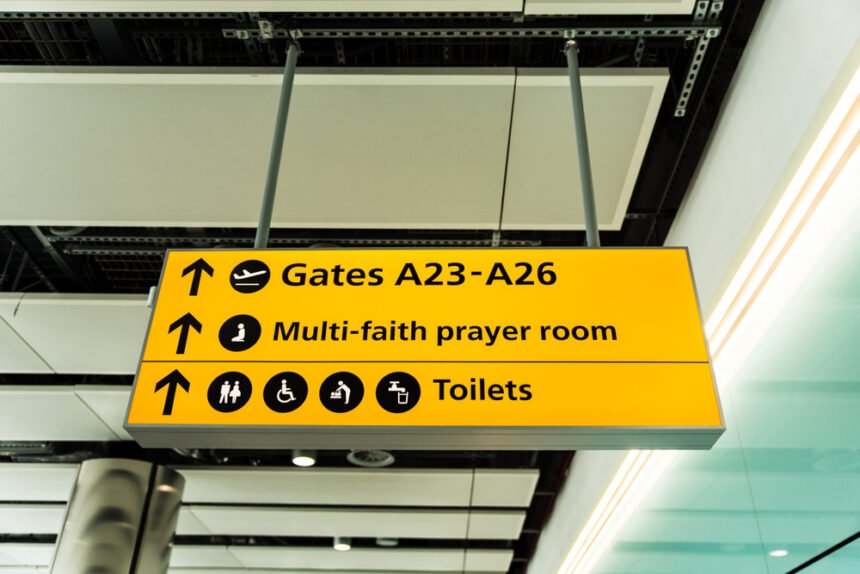When you walk into an unfamiliar hotel, shopping centre, hospital, or even a park, how do you navigate? How do you find your way from the entrance to the designated spot? Venture a guess? Do you rely solely on memory from the last time you visited? Or, perhaps, you look for and follow the signs that direct you. These guiding signs are what we call ‘Wayfinding Signs’ and their role is more significant than we might presume. This leads to our central topic of discussion today: Understanding the Importance of Wayfinding Signs in Public Spaces. But what are wayfinding signs? Why are they crucial in public spaces? And how can they enhance the user experience? Stick around as I unpack these questions, one sign at a time.
What are Wayfinding Signs?
At their simplest, wayfinding signs refer to informational signs that guide people through a physical environment, enhancing their understanding and experience of the space. By strategically pointing to certain landmarks, directing pedestrians, or mapping out an entire area, these signs actively contribute to a functional and interactive public space.
From the monolithic stone piles of the ancient world, leading travellers across vast landscapes, to the modern, sleek directional signage we see today, wayfinding signs have evolved, growing increasingly diverse and complex. They come in various shapes, sizes, and formats, each tailored to fit in tandem with the physical surroundings and to meet the user’s navigational needs.
Necessity of Wayfinding Signs in Public Spaces
Why are so many resources funneled into creating comprehensive wayfinding systems? The answer lies in the behavioral psychology of humans. As creatures of habit, we crave familiarity. When exploring unfamiliar environments, we tend to get anxious or disoriented. This is where wayfinding signs step in, restoring a sense of control and reducing these feelings.
Wayfinding signs in public spaces provide a bridge to inform and direct, ensuring individuals can find their way without feeling overwhelmed or confused. Therefore, a well-planned and effectively executed wayfinding system is essential for any public space that experiences a large influx of visitors.
Enhancing User Experience with Wayfinding Signs
Wayfinding signs don’t just serve functional needs; they also play a significant role in enhancing user experience. An excellent wayfinding system can go beyond simply avoiding confusion – it can offer an engagement tool, add to brand identity, and create a sense of place and community.
Think of the utility you experience when clear signage assists you in rushing to catch a train at a sprawling station or the silent satisfaction when an attractive directory sign makes it easy to locate your favourite brand in the local mall. These experiences provide comfort, keep us stress-free, and might even make us more open to thoroughly exploring the surrounding environment.
Pro’s and Con’s of Wayfinding Signs
While wayfinding signs are generally beneficial, it’s always prudent to weigh both their strengths and weaknesses. The benefits, as we’ve discussed in detail, range from providing directional aid to improving the overall quality of the user experience. Moreover, well-executed signage can potentially be an aesthetic addition to the environment, improving its overall visual appeal.
On the downside, inadequate or misleading signs can lead to frustration and disorientation. Also, creating a comprehensive wayfinding system requires significant planning, design, and financial resources, which could be a deterrent for some entities.
Looking Ahead: Future Trends
Once seen as a mere afterthought, wayfinding signs are now increasingly viewed as essential, playing a substantial role in a location’s overall image. Going forward, the trend is towards interactive and digital signs, employing modern technology for an efficient, enjoyable, and interactive navigation experience.
The Role of Good Design in Wayfinding Signs
Ultimately, the design is key. From color and lighting to typography and graphics, a well-designed wayfinding sign can make the process of finding one’s way a delight rather than a chore.
Conclusion
Conclusively, wayfinding signs, often taken for granted or overlooked, are crucial components in creating functional, accessible, and engaging public spaces. They ensure efficient navigation, enhance user experience, contribute to the aesthetics, and can aid in building the identity of a place.
Given their importance, investing in effective and well-designed wayfinding systems is crucial. As we continue to evolve in our design methods and explore digital alternatives, wayfinding signs hold enormous potential to further transform our public spaces. So the next time you effortlessly navigate yourself in an unfamiliar place, remember to appreciate the task these humble signs have accomplished.



